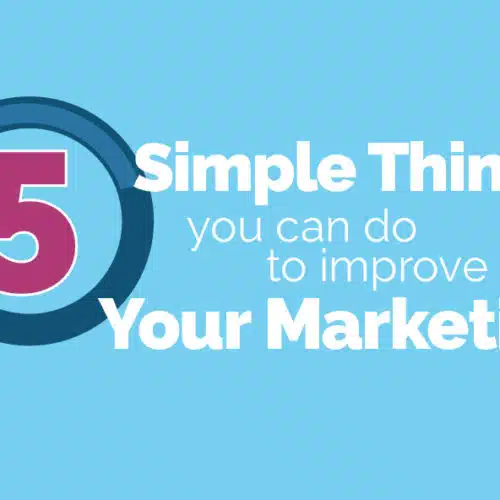Understandably, it may sound like wishful thinking. But it’s possible to get a small business loan even if your credit history isn’t impeccable.
At one time or another, you might need to consider financing for your business. However, if you’ve had problems paying off business loans in the past, you may hesitate to ask for a new one.
But there’s no reason to worry. A bad credit score is often seen as a higher risk by most lenders, which can affect your loan eligibility and the terms you are offered. However, bad credit doesn’t necessarily make it impossible for you to qualify for a loan.
Applying for a small business loan is still an option as long as your business meets certain criteria.
This article explains if it’s possible to get a small business loan with bad credit, with tips on who to improve your credit score.
How Do I Get a Business Loan With Bad Credit
A credit score of 300 to 629 is considered bad. A poor credit score can make loan applications more challenging, as lenders may see you as a higher risk.
Here’s what you can do when applying for a loan if your score is in that range. Before submitting any loan applications, review your credit file to understand your financial standing and identify any errors or negative marks that could impact your approval chances.
#1 – Offer Collateral
Collateral mitigates lender risk in approving your loan. There are a few types of collateral you can offer.
- Personal guarantee (your personal assets)
- Outstanding customer invoices
- Equipment
- Business real estate
- Savings accounts
Whichever option you choose, the lender can seize the asset in the event of a default. As such, you’ll want to account for unexpected business downturns that may prevent you from repaying the loan as scheduled.
Generally, it’s best to use an asset that you don’t mind losing for collateral purposes.
#2 – Ask for a Low Amount
You’ll need to determine what’s necessary to cover the specific business need for the loan, preferably based on your current financial standing and business plan.
That will show the lender that you’ve carefully considered your application and where to allocate the money. A well-prepared business loan application increases your chances of securing funding. Also, a good business plan will allow you to pay off the loan easier.
On top of the business plan, the other helpful documents include:
- Financial forecasts
- P&L statements
- Balance sheets
Additionally, your business plan should propose how you plan to cut overheads and variable costs. You may also want to address how you expect to bring in additional revenue.
All of the extra work will allow you to determine a realistic loan amount. It shows lenders that you’ve taken the necessary steps to ensure you’ll be able to repay the loan. When considering your options, be sure to explore different finance options to find the best fit for your business needs.
#3 – Figure out Your Current Credit Position
Before applying, you need to know exactly where your business stands. In addition to your personal credit, make sure to check your business credit scores, as these can impact your access to funding and financing options.
That’s ideally after you’ve done your best to improve your credit score.
But it wouldn’t hurt to assess your recent personal and business credit reports when you apply. That will give you a better idea of the type of loan and amount you qualify for.
In Australia, you’re entitled to one free credit report a year. After that, you can request supplementary scores to get a better overview of your current financial standing.
#4 – Include a Co-Signer
The co-signer of your loan is ready to take on some of the responsibility of repaying the loan. Needless to say, the lender will also access the person’s credit history.
To qualify for the best small business loan, your co-signer needs to have a sparkling credit history. On top of that, the person or business must have enough funds to service the debt if you default.
#5 – Eligibility Requirements
Depending on the type of loan, you’ll have to meet lender requirements.
Traditionally, lenders will concentrate on your personal credit and business history. Traditional lenders often have stricter requirements, making it harder for those with poor credit to qualify, while potential lenders offering bad credit business loans may be more flexible in their criteria. But, if you choose to go with alternative lenders, they might require your business to meet other criteria. For example, it’s not uncommon for lenders to ask for proof of revenue in the past year.
To avoid applying to something you’re ineligible for, you should take the time to assess small business loan terms with a number of lenders. Most credit check business loans require a thorough review of your credit history, so be sure to pick one that best meets your current finance and credit history.
#6 – Choose the Loan That Best Fits Your Needs
Getting a small business loan with bad credit means that you need to pay attention to the type of loan. Small business loans are available even for those with bad credit. Some of the available options include:
- Microloans
- Merchant cash advance
- Bank loans
- Credit cards
- Fintech lenders
- Bad credit loans (especially for those seeking unsecured finance)
There are even more options, but the idea is to assess the pros and cons of each before you choose one that works best for your business needs and current financial standing.
For example, microloans are usually easy to get for those with a poor credit history. But the loan amount is also micro and high interest rates are a distinct possibility.
Fintech lenders often offer an online application process, which can provide fast access to funds. This is especially important in a competitive market where quick funding can help your business stay ahead.
Understanding the Application Process
Applying for a business loan when you have bad credit can feel overwhelming, but knowing what to expect can make the journey much smoother. The process usually starts with a pre-approval, where many lenders conduct a soft credit check to get a sense of your credit score and financial background—without impacting your credit. This step helps you understand how much you might be able to borrow and what interest rates could apply to your business loan.
Once you move past pre-approval, you’ll need to provide supporting documents such as bank statements, tax returns, and a solid business plan. These documents help lenders assess your business’s financial health and your ability to repay the loan. Today, many lenders allow you to apply online, making it easier and faster to submit your application and receive a decision.
If you have a bad credit history, it’s wise to seek out lenders who specialise in bad credit business loans. These lenders are more likely to look beyond your credit score and consider the overall viability of your business, your recent financial performance, and your plans for the future. By understanding each step and preparing your documents in advance, you can approach the application process with confidence and increase your chances of securing the funds your business needs.
Decoding Loan Terms: What to Watch For
When you’re considering a business loan—especially with bad credit—it’s essential to read the fine print and fully understand the loan terms. The interest rate is a key factor, as higher interest rates can quickly add up and impact your business’s cash flow. Look for business loans that offer competitive rates and repayment schedules that fit your financial situation.
Repayment terms can vary widely. Some loans require daily or weekly payments, which can help you manage cash flow gaps, while others offer monthly repayments. Make sure the repayment schedule aligns with your business’s income cycle to avoid unnecessary strain on your cash reserves.
Don’t overlook the fees associated with the loan. Establishment fees, ongoing account fees, and early repayment penalties can all affect the total cost of borrowing. For small business owners, these extra costs can make a big difference, so it’s important to factor them into your decision.
If you’re unsure about any terms, consider consulting a financial advisor or loan expert. They can help you compare options and choose a loan that supports your business goals without putting your finances at risk.
Considering a Line of Credit
A line of credit is a flexible financing solution that can be especially helpful for small businesses dealing with unpredictable cash flow. Unlike a traditional loan, a line of credit allows you to access funds as needed, up to a set limit, and you only pay interest on the amount you actually use. This makes it a great option for covering short-term expenses, managing cash flow gaps, or taking advantage of new business opportunities as they arise.
When evaluating a line of credit, pay close attention to the interest rate, any associated fees, and the repayment terms. While businesses with a strong credit history may qualify for lower interest rates, there are also options available for those with bad credit. Non bank lenders and private lenders often provide more flexible credit lines for businesses with low credit scores or a history of past credit challenges.
A line of credit can be a strategic tool for small businesses looking to maintain steady operations or invest in growth, without the commitment of a lump-sum loan. Just be sure to review all terms carefully and ensure the facility fits your business’s unique financing needs.
How to Improve Your Credit History
First of all, you should do your best to repay the loan on time. Late payments can negatively impact your credit score and should be avoided whenever possible. It helps if your outstanding balance is as low as possible.
Also, you’ll want to avoid multiple active credit lines or at least lower the credit limits before applying for new credit.
Lastly, it’s critical to keep your personal and business credit history separate.
Why?
Poor personal credit history may not affect your business credit application as long as you keep the business is creditworthy. Addressing past credit issues can also improve your eligibility for future loans.
Get a Small Business Loan, No Matter What
When all is said and done, it’s not impossible to get a small business loan with a bad credit history.
However, you need to show the lenders that you’re determined to improve your credit history. It’ll help to create a business plan that demonstrates you’ve come up with a strategy to repay the loan.
And if you need further assistance, Unsecured Finance Australia is here to help.
Apply online and you can receive your approval within 24 hours.
Speaking to a Loan Expert: Your Secret Weapon
If you’re feeling uncertain about navigating business loans with bad credit, reaching out to a loan expert can make all the difference. Loan experts have in-depth knowledge of the lending landscape and can help you understand your credit report, identify the best bad credit business loans, and prepare a strong application.
For businesses with a bad credit history, a loan expert can connect you with lenders who are more likely to approve your application, saving you time and reducing the risk of multiple credit checks that could further impact your credit score. They can also help you compare loan options, negotiate terms, and ensure you’re getting a deal that aligns with your business goals and financial situation.
By leveraging their expertise, you can avoid common pitfalls, secure the funds you need, and focus on moving your business forward with confidence.
Aligning Your Loan With Your Business Goals
Securing a business loan is about more than just getting access to cash—it’s about choosing a financing solution that supports your business goals. Whether you need to bridge cash flow gaps, invest in new equipment, or fund an expansion, the right loan should fit seamlessly into your business plan and financial situation.
Consider the loan amount, interest rate, and repayment terms in light of your current financial situation and future projections. For example, a short-term loan with flexible repayments might be ideal for covering operational expenses, while a secured loan with a longer term could be better suited for major investments or growth initiatives.
Take the time to review your business plan and ensure the loan you choose will help you achieve your objectives without putting undue strain on your finances. Consulting with a financial advisor or loan expert can help you weigh your options and select a loan that not only meets your immediate needs but also positions your business for long-term success. By aligning your financing with your business strategy, you can make the most of your loan and drive your business forward.




